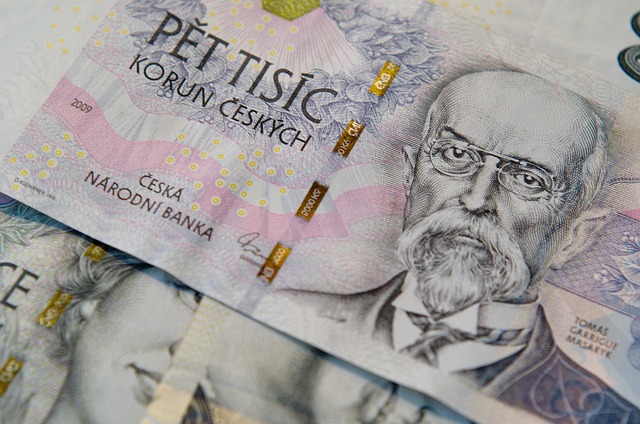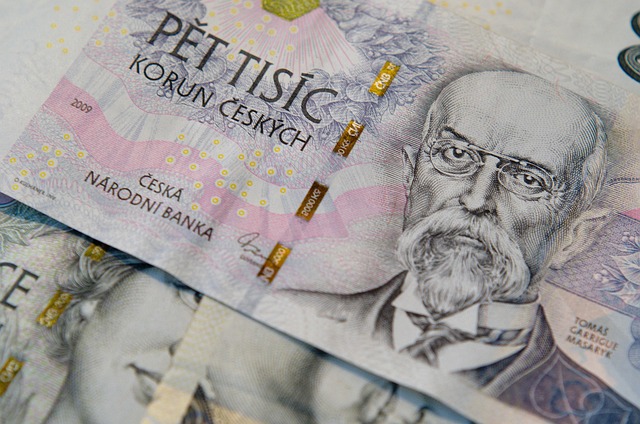Bitcoin Live Value in USDT: Real-Time Guide and Trading Tips
Author: Jameson Richman Expert
Published On: 2025-11-04
Prepared by Jameson Richman and our team of experts with over a decade of experience in cryptocurrency and digital asset analysis. Learn more about us.
Bitcoin live value in USDT is the real-time price of Bitcoin quoted against Tether (USDT), the most widely used stablecoin for crypto trading. This article explains how to access accurate BTC/USDT quotes, what affects the live value, practical trading strategies, tools and APIs to follow the price, legal and tax considerations, and where to trade with reliable platforms. Whether you are a beginner checking the BTC price or an active trader building a strategy, this comprehensive guide gives actionable insights and links to trusted resources.

Why Bitcoin Live Value in USDT Matters
USDT (Tether) is a USD-pegged stablecoin widely used as the base trading pair on many exchanges. Quoting Bitcoin in USDT offers several benefits:
- Stable reference: USDT aims to maintain parity with the US dollar, reducing price noise from fiat conversions.
- High liquidity: BTC/USDT pairs are often the most liquid markets, enabling tighter spreads and easier entry/exit.
- Fast settlements: On-chain USDT and exchange balance transfers are commonly used for rapid trading.
Where to Check Bitcoin Live Value in USDT
Accurate live pricing comes from exchanges and market data aggregators. Use multiple sources to corroborate the price and spot discrepancies (arbitrage opportunities or stale data).
Top Exchanges (with signup links)
- Binance — Register: One of the largest BTC/USDT order books and a preferred source for live rates (symbol: BTCUSDT).
- MEXC — Register: Competitive fees and multiple USDT markets.
- Bitget — Register: Good liquidity for spot and derivatives.
- Bybit — Register: Strong derivatives and BTC/USDT order books.
Market Data Aggregators and Info Pages
- CoinMarketCap — Bitcoin: Aggregated prices and exchange breakdowns.
- CoinGecko — Bitcoin: Live price, historical charts, and metrics.
- Bitcoin — Wikipedia: Background, mechanics, and history for context.
How Exchanges and APIs Provide BTC/USDT Live Value
Exchanges publish live order book data, trade ticks, and aggregated indices. Key ways to retrieve live BTC/USDT data:
- Exchange Web UI: The simplest — login and view spot pair BTC/USDT charts and depth.
- Websocket streams: For low-latency data, use exchange websocket APIs to subscribe to trade and depth updates (preferred by algorithmic traders).
- REST endpoints: Poll endpoints for ticker price snapshots and 24h statistics. Example: Binance endpoint for BTCUSDT price — https://api.binance.com/api/v3/ticker/price?symbol=BTCUSDT
- Market data providers: Aggregators like CoinMarketCap and CoinGecko provide consolidated feeds and APIs for cross-exchange averages.
Practical Example: Retrieve Live Price via Binance API
GET request:
https://api.binance.com/api/v3/ticker/price?symbol=BTCUSDT
Response contains the “price” field with the current last trade price. For real-time streaming, use Binance’s websocket trade stream for BTCUSDT.

Understanding Price Differences: Best Price vs Executable Price
“Quoted” live value may differ from the price you can actually execute due to:
- Spread: Difference between best bid and ask. Tight spreads on high liquidity exchanges; wider on low-volume exchanges.
- Slippage: Larger market orders walk the book and get worse average fills.
- Fees: Trading fees reduce net execution price; factor maker/taker fees and any other costs.
- Latencies: APIs or UIs with update delays produce stale prices for fast traders.
Factors That Drive Bitcoin Live Value in USDT
Bitcoin’s price in USDT moves from macro, crypto-native, and market structure causes. Understanding them helps interpret live moves.
- Macro-economic: Interest rates, inflation reports, dollar strength, and global liquidity can shift risk appetite for Bitcoin.
- Market sentiment: News around ETFs, institutional adoption, exchange hacks, or legal rulings move BTC quickly.
- On-chain indicators: Exchange inflows/outflows, miner selling, realized volatility, and long-term holder behavior.
- Derivatives and funding rates: Leverage in perpetual futures markets can amplify directional moves as funding imbalances trigger liquidations.
- Regulatory developments: Legal news in major markets (US, EU, India) can create rapid volatility — for legal context in Indian markets, see this guide on trading legality: Is trading Bitcoin legal in India?
How Traders Use Bitcoin Live Value in USDT
Different market participants use the live BTC/USDT price for various purposes:
- Spot traders: Buy low, sell high on BTC/USDT."
- Derivatives traders: Use BTC/USDT as the reference price for perpetual swaps and futures to hedge or speculate with leverage.
- Arbitrageurs: Capture cross-exchange price differentials between BTC/USDT pairs.
- Market makers: Provide liquidity by quoting both bids and asks near the live price to capture spreads.
Example Trading Scenario — Entry, Stop, and Position Sizing Using USDT
Assume BTC/USDT live value = 50,000 USDT. You want to risk 1% of a 10,000 USDT account (100 USDT) with a stop-loss 5% below entry.
- Entry price: 50,000 USDT
- Stop-loss: 47,500 USDT (5% below)
- Risk per BTC = 50,000 - 47,500 = 2,500 USDT
- Position size (BTC) = Risk allowed / Risk per BTC = 100 / 2,500 = 0.04 BTC
This ensures money management discipline based on the live BTC/USDT quote.

Tools and Alerts to Follow BTC/USDT in Real-Time
To act on price movements, set up tools and alerts:
- Exchange alerts: Most exchanges offer price alerts, order triggers, and mobile push notifications.
- TradingView: Custom indicators and alert conditions for BTC/USDT charts (web and mobile).
- Websocket-based bots: For automated trading, subscribe to exchange websockets to react within milliseconds.
- Portfolio trackers: Tools that update at short intervals to synchronize holdings with live USDT valuations.
Where to Find Reliable Price Predictions and Analysis
Price predictions are inherently uncertain; use multiple credible sources and combine technical and fundamental analysis. For curated prediction resources and reviews, see this guide to the best bitcoin price prediction websites: Best Bitcoin Price Prediction Website Guide.
For broader trading profitability outlooks and market context heading into 2025, consult analyses like: Is Crypto Trading Profitable in 2025?
Risk Management When Trading BTC/USDT
Control risk using proven practices:
- Position sizing: Limit capital at risk per trade (e.g., 1–3% of account).
- Use stop-loss orders: Predefine stop-loss levels that make sense versus volatility.
- Avoid excessive leverage: High leverage increases likelihood of liquidation during sudden moves.
- Diversify: Don’t allocate all capital to a single trade or instrument.
- Monitor order books: Before placing large orders, check depth to estimate slippage.

Taxes and Legal Considerations
Taxation depends on jurisdiction; keep records of BTC/USDT trades, realized gains/losses, and volume. In some countries, crypto is taxable as property; in others, it's regulated differently. For a country-specific example, review the Indian legal overview here: Is Trading Bitcoin Legal in India?. For U.S. tax guidance, consult the IRS page on virtual currencies: IRS — Virtual Currency FAQs.
Common Pitfalls When Relying on Live Prices
- One-source dependence: Relying on a single exchange can mislead if that exchange has low liquidity or data issues.
- Ignoring fees and slippage: The live mid-price is not necessarily the price you will obtain after fees and execution impact.
- Overtrading: Frequent reacting to minor price ticks increases trading costs and emotional bias.
- Failing to verify order fills: Partial fills can change your effective price and risk profile.
Using Bitcoin Live Value in USDT for Advanced Strategies
Advanced traders use BTC/USDT live values for:
- Algorithmic trading: Backtesting strategies and executing via API with live price feeds.
- Market making: Quoting both sides near the mid-price to capture spreads.
- Statistical arbitrage: Pair trading across correlated crypto assets (e.g., BTC vs ETH), monitoring BTC/USDT as the base.
- Funding rate strategies: Arbitraging between spot BTC/USDT and perpetual futures where funding imbalances exist.
Real Example — Spot-Futures Arbitrage
If BTC/USDT spot = 50,000 USDT and BTC perpetual futures trade at 50,500 USDT with a positive funding rate, an arbitrageur might:
- Buy spot BTC/USDT.
- Short equal notional amount of BTC perpetual.
- Collect funding payments or profit when basis compresses.
This requires precise monitoring of live BTC/USDT spot and funding rate updates.

How to Evaluate the Best Exchange for Live BTC/USDT Trading
Consider these criteria when selecting an exchange to trade BTC/USDT:
- Liquidity & volume: Higher liquidity reduces spreads and slippage.
- Security and reputation: Look for strong custody measures and compliance track record.
- Fees: Maker/taker fee structure and withdrawal costs.
- API reliability: Uptime, latency, and websocket stability for automated strategies.
- Geographic accessibility: Regulatory compliance and availability in your country.
To explore exchanges with good BTC/USDT liquidity, consider registering (if suitable) via these links:
Price Prediction and Cross-Asset Context
When interpreting live BTC/USDT quotes, compare them with related assets. For example, Ethereum’s price action often correlates to Bitcoin during crypto-wide moves. For deeper Ethereum analysis, see this Ethereum price outlook: Ethereum Price Prediction and Short-Term Strategies.
How to Build a Simple BTC/USDT Price Tracker
Quick approach for a desktop or cloud script:
- Choose a reliable API (Binance REST + websocket or CoinGecko for aggregated data).
- Fetch initial ticker via REST to seed the price.
- Subscribe to websocket trade stream for real-time ticks.
- Persist latest price and timestamp to a lightweight DB or in-memory store.
- Trigger alerts based on percentage moves, support/resistance breaks, or moving average crossovers.
Example endpoints:
- Binance REST price:
https://api.binance.com/api/v3/ticker/price?symbol=BTCUSDT - CoinGecko simple price:
https://api.coingecko.com/api/v3/simple/price?ids=bitcoin&vs_currencies=usdt

How to Avoid Data Pitfalls and Spoofed Prices
Data integrity is crucial. Do not rely solely on a single feed. Cross-check:
- Multiple exchange tickers (binance, bybit, bitget).
- Aggregated indexes (CoinMarketCap, CoinGecko).
- Volume-weighted average price (VWAP) for realistic trade execution context.
Is Trading BTC/USDT Profitable?
Profitability depends on skill, strategy, capital, and market conditions. For a structured analysis of crypto trading profitability prospects, refer to: Is Crypto Trading Profitable in 2025? Key determinants include edge (strategy), risk management, fees, and discipline.
Frequently Asked Questions (FAQ)
What is the BTC/USDT pair?
BTC/USDT is the trading pair where Bitcoin is priced in Tether (USDT). It’s a direct spot market quote representing how many USDT one Bitcoin is worth.
Is USDT always equal to USD?
USDT is designed to be pegged 1:1 to USD, but under certain market stress conditions or liquidity events it may deviate slightly. Always be cautious in extreme market conditions and consider stablecoin risk.
Which source provides the “best” live price?
No single source is flawless. For the most reliable representation, use a combination: a top-tier exchange with deep liquidity (e.g., Binance) plus an aggregator (CoinGecko, CoinMarketCap) and cross-check order book depth.
How often should I refresh the price?
For manual checks, refresh every few seconds to a minute. For automated trading, use websocket streams for millisecond updates. Avoid excessive polling of REST APIs which can be rate-limited.
Can I hedge my BTC exposure using USDT?
Yes — you can hedge by selling BTC/USDT spot or shorting BTC perpetual futures that settle in USDT. Choose instruments, margin, and counterparties carefully to manage counterparty risk.

Conclusion
Monitoring the bitcoin live value in usdt is essential for traders and investors who use USDT as their base currency. Use multiple data sources (top exchanges and aggregators), adopt strict risk management, and rely on real-time APIs for fast execution. For practical trading and strategy guidance, explore curated resources on price prediction and legal considerations linked throughout this article, and consider reputable exchanges for trading execution.
Recommended reading and tools:
- Best Bitcoin price prediction resources: Best Bitcoin Price Prediction Website Guide
- Legal trading guidance for India: Is Trading Bitcoin Legal in India?
- Crypto trading profitability outlook: Is Crypto Trading Profitable in 2025?
- Ethereum price context: Ethereum Price Prediction and Strategies
If you're ready to trade BTC/USDT on liquid platforms, consider the exchanges linked above (Binance, MEXC, Bitget, Bybit) and ensure you complete identity verification and enable strong account security (2FA, withdrawal whitelist) before moving significant funds.